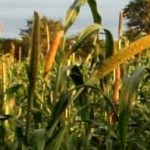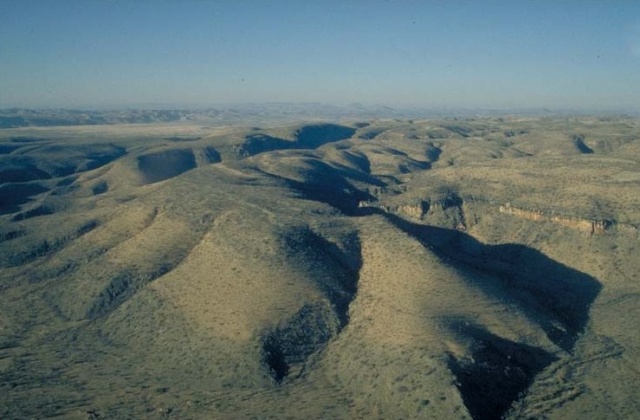Mahangu is for sure the most important product of Sustainche Farm™ to supply the farm family.
In Namibia, pearl millet (Pennisetum glaucum) is locally known as “mahangu” and grown mainly in the North, where it is the staple or basic food. Mahangu is well adapted to the growing region characterized by average annual rainfall between 300 to 500 mm, high year-to-year rainfall variability, high temperature, and low soil fertility. It even performs well in soils with high salinity or low pH. Because of its tolerance to difficult growing conditions, it can be grown in areas where other cereal crops, such as maize or wheat, would not survive.
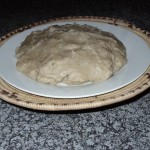 In Owambo kitchen mahangu is traditionally prepared as porridge called “Oshifima” (left), or fermented to make a favourite drink called “Oshikundu” (right).
In Owambo kitchen mahangu is traditionally prepared as porridge called “Oshifima” (left), or fermented to make a favourite drink called “Oshikundu” (right).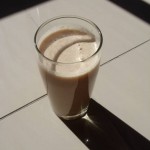
Harvesting and Drying
Tatekulu Fillipus usually waits for mahangu heads to dry partially in the field before harvesting. Mahangu is harvested generally around May/June, depending on the rain pattern of the year. The stem is cut with a sharp knife just beneath the head. The heads are placed in large harvesting baskets.
Straight after harvesting mahangu heads are sun-dried on the threshing floor over the period of a few weeks. Depending on the harvest volume some portion of mahangu might be also first dried on an elevated wooden platform near the field.
Next Seasons Planting Seed
Keeping seeds from selected mahangu heads for planting the next season is a small but crucial part of post-harvest systems. Tatekulu Fillipus chooses the large heads from the best-looking plants.
Threshing and Winnowing
Threshing is done at the threshing floor (Oshipale). The level quadrangle-shape floor of the threshing area is constructed by a concrete-like coating made from the material of termite mounds. Can you find the threshing floor on the Sustainche Farm™ sketch map ? 😉
Threshing is the detachment of kernels from the rest of the head (or panicle). For mahangu it also involves removing the chaff, which is carried out by winnowing, to obtain a clean grain. The traditional way to thresh is by using wooden sticks to beat the mahangu heads on the ground.
Threshing is very often a work bottleneck in the Sustainche Farm™ calendar. Since there is a threshing machine available near the village’s Primary School, mechanisation of threshing is considered important not only for alleviating these time and work constraints, but also to reduce post-harvest grain infestation by pests, as well as grain contamination by sand, dust and micro-organisms.
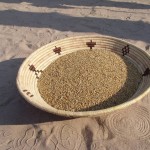 Straight after threshing, the grain is brought to the homestead for storing in the granary.
Straight after threshing, the grain is brought to the homestead for storing in the granary.
To be concluded !

